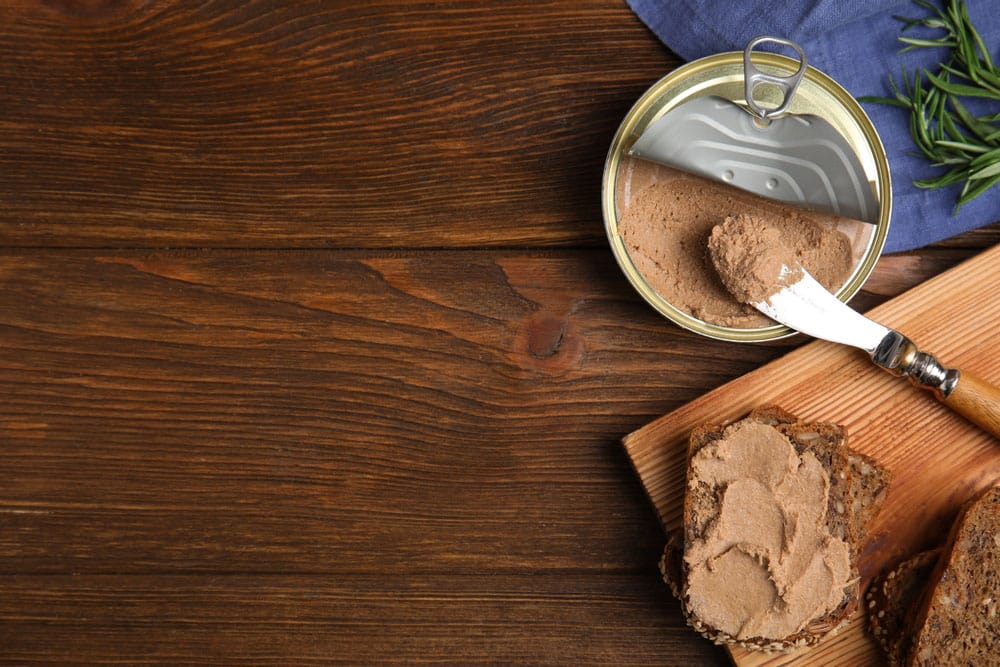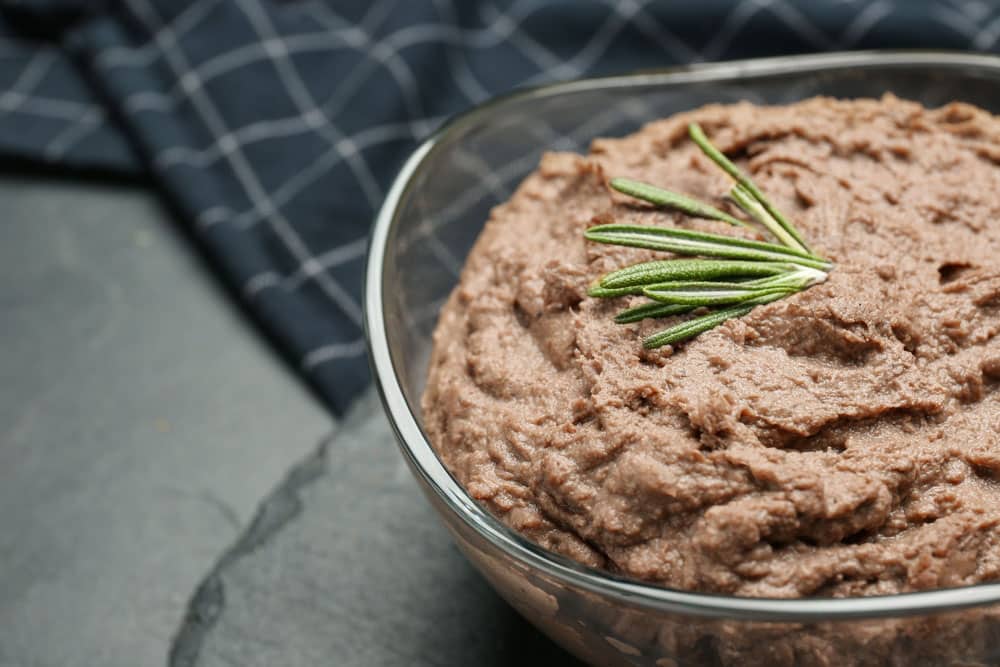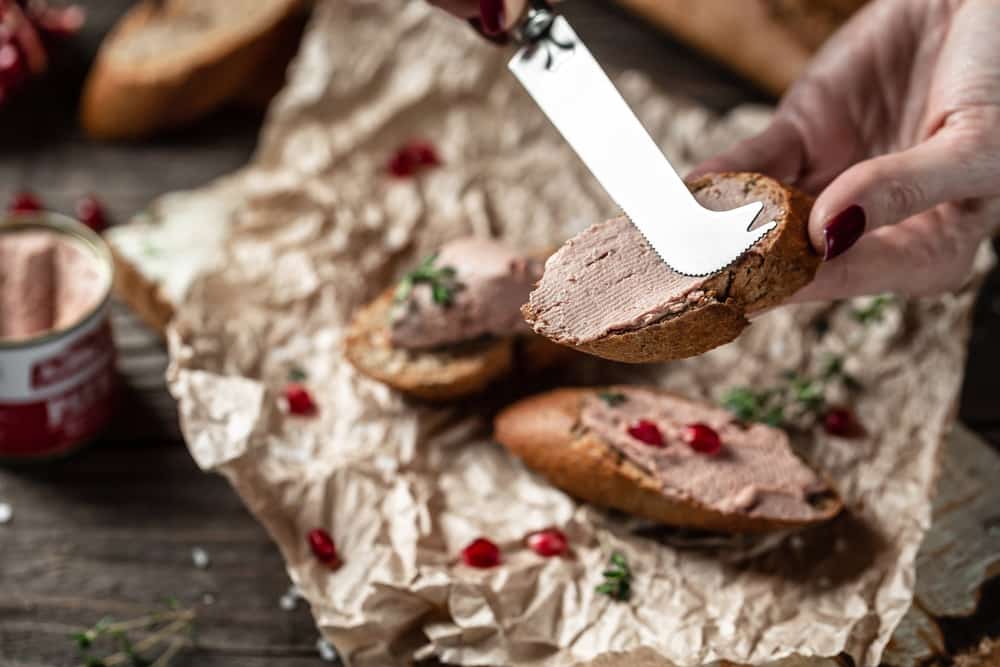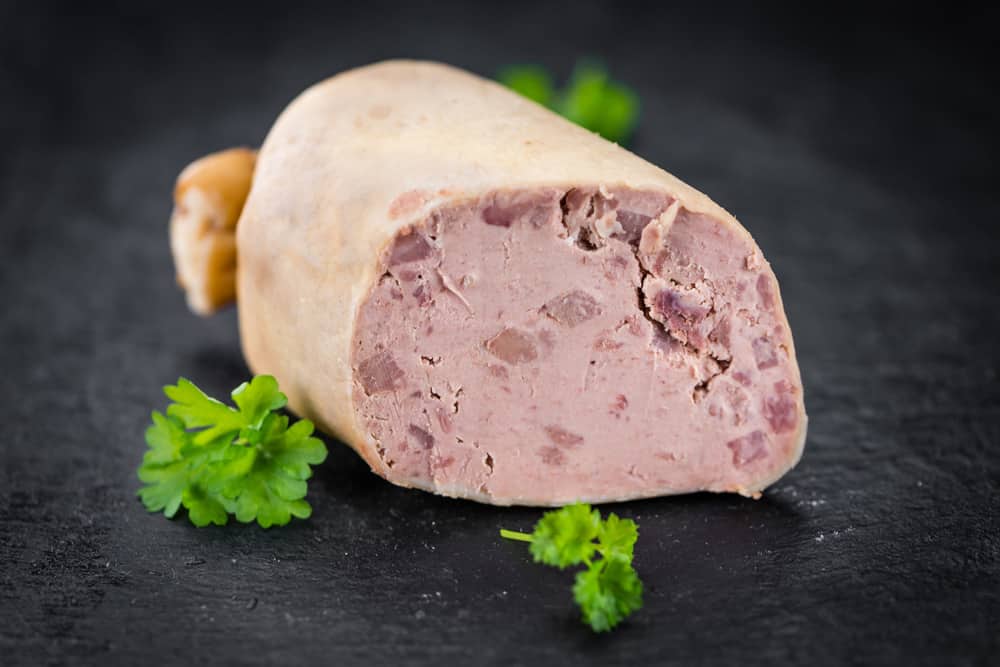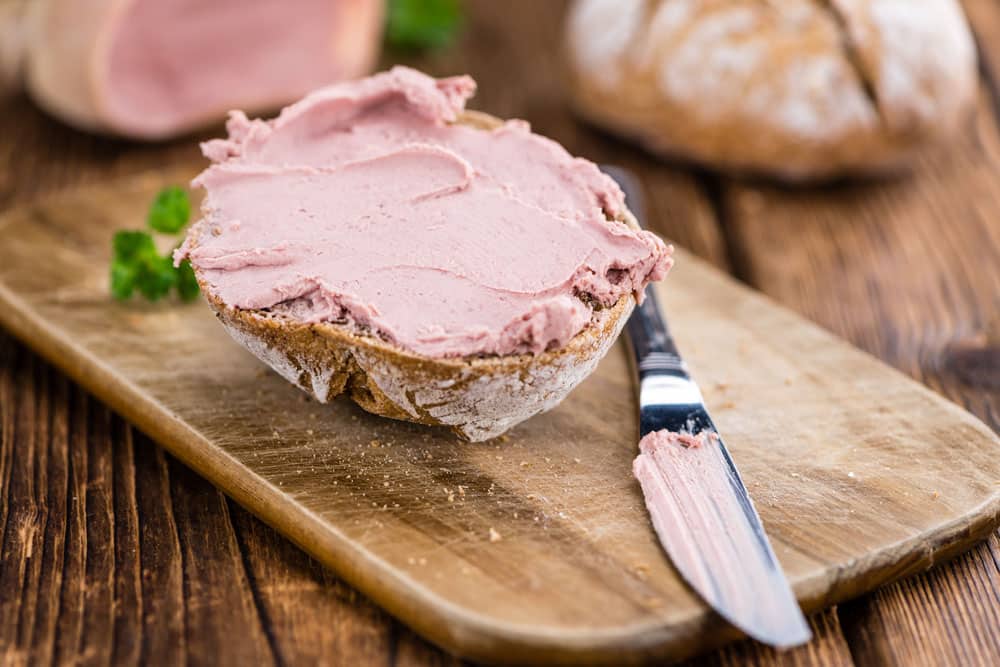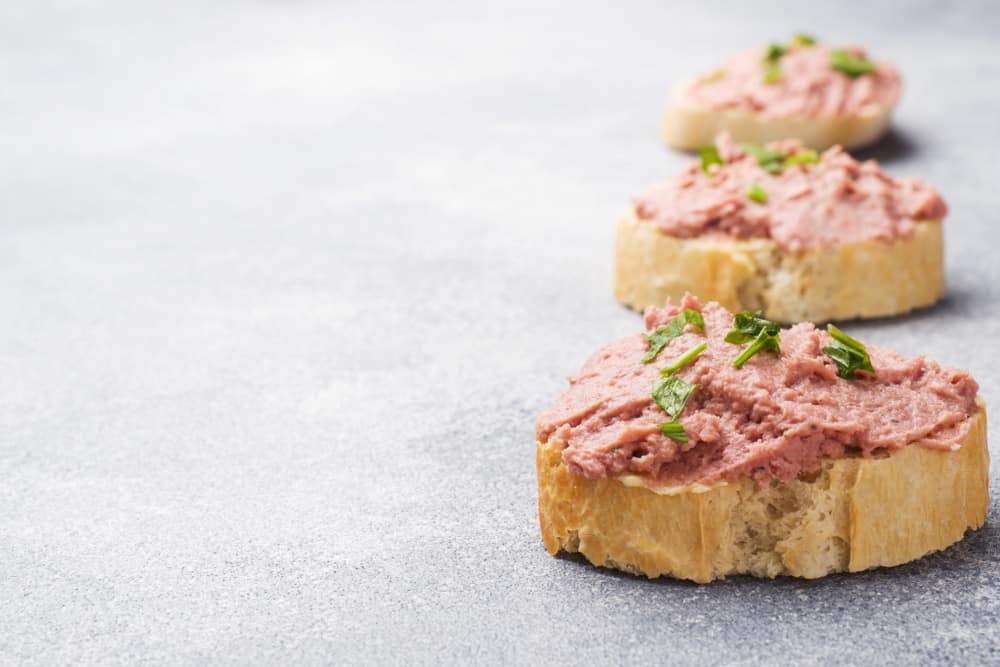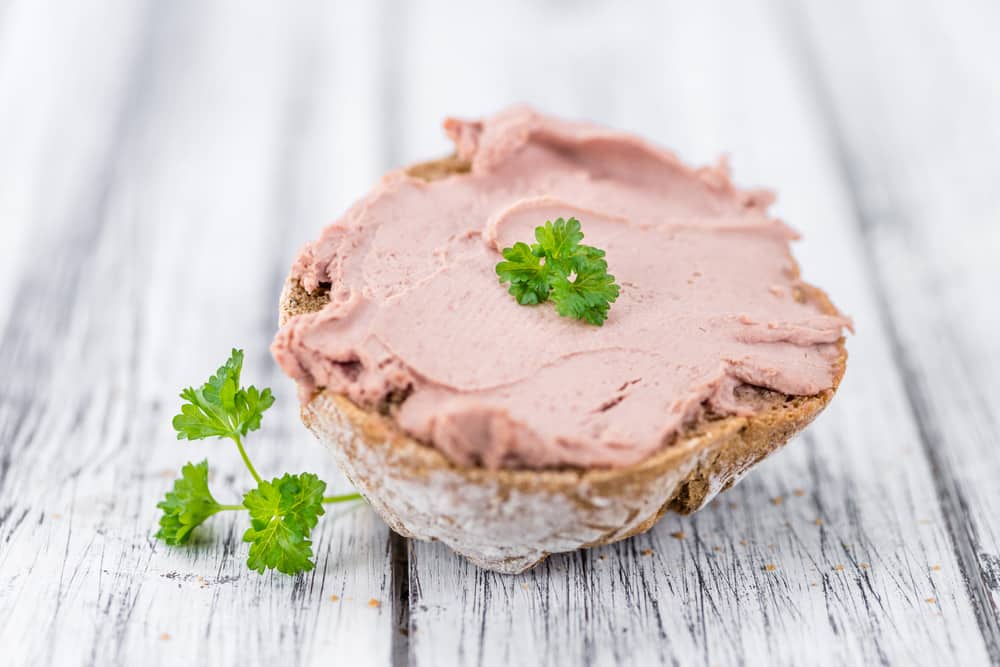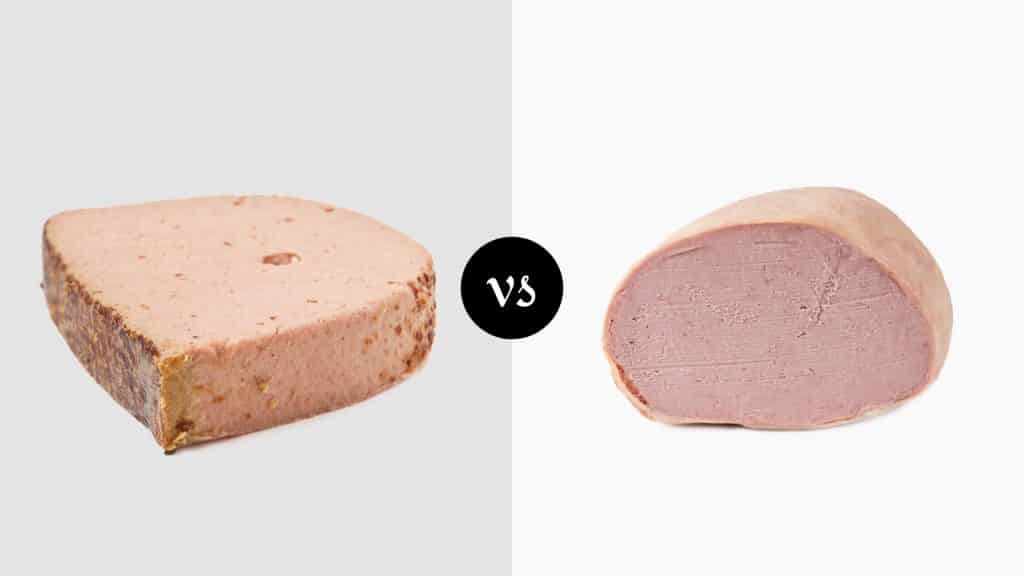
DISCLOSURE: This post may contain affiliate links, meaning when you click the links and make a purchase, I receive a commission. As an Amazon Associate I earn from qualifying purchases.
Are you looking for a protein-dense meal that is both nutritious and delicious at the same time? Does this seem like a combination hard to find? Well, then we think you need to try some pâté and Liverwurst. Both of these dishes promise a fulfilling meal.
In addition, the high protein to carbohydrate ratio makes these meals ideal before a strenuous hike or a tough day at work.
Pâté Vs. Liverwurst Comparison
| Pâté | Liverwurst | |
|---|---|---|
| Definition | Spreadable Paste Made From Forcemeat & Fat | Soft Spreadable Sausage Made From Liver |
| Origin | France,Chef Jean-Joseph Clause - 1779 | Germany, 1852 |
| Size | Various Sizes | 2 ½” Diameter, ¼” Width Sausage |
| Ingredients | Liver, Forcemeat (Ground Pork, Poultry, Beef, Fish), Fat, Vegetables, Herbs, Spices, Wine/Brandy, Egg | Pig/Calf Liver & Sphincters, Veal, Fat, Black Pepper, Marjoram, Allspice, Thyme, Ground Mustard Seed, Nutmeg, Onion, Bacon, Various Other Meats |
| Health Benefits | High In Protein, Iron, Copper, Selenium, Riboflavin, Vitamin A, Vitamin B12 | High In Vitamins A & B (Especially High In B12), Iron, Sodium |
| Recipe | Boil/Soften Forcemeat & Fat Then Combine With Herbs, Spices & Alcohol Before Slow Cooking Until Paste-Like Consistency Reached | Pork Liver, Pork Butt & Pork Fat Ground & Combined Then Blended With Onion, Milk Powder, White Pepper, Salt, Paprika, Marjoram, Coriander, Mace, Allspice, Cardamom, Sugar - Total Mixture Reground, Frozen And Then Packed Into Muslin And Formed Into Sausage Which Is Boiled For 3+ Hours |
| Shelf Life | 2 Weeks Refrigerated | 4-6 Days Refrigerated, 2 Months Frozen |
Pâté Vs. Liverwurst
A lot of people seem to believe that pâté and Liverwurst are one in the same thing. But they’re not. Both dishes originated from different parts of the world and catered to different tastes. Are you also confused between the two? Continue reading to get all your answers.
Pâté
[amazon box=”B000H23W7Y”]
Out of the countless spreads available, pâté is the quintessential choice for anyone who eats meat. Whether eaten as is or used as a flavor enhancer, this is a spread that few kitchens can go without. Let’s take a closer look at what makes it so popular.
Definition
Pâté is a food paste that’s made from a blend of lean raw meat and fat called forcemeat. Regardless of which meat and organs are used as the forcemeat, additional fat is almost always added in order to prevent the pâté from drying out.
Origin
Pâté is a creation from French cuisine. Even the word “pâté ” translates from French to “paste.” It is believed that the French chef Jean-Joseph Clause created the first popular pâté in 1779.
His pâté was created using foie gras, and in 1784, King Louis XVI granted the famed chef a patent for his creation, officially giving birth to the pâté industry.
Size
There are lots of different-sized pâté s available. There is no one fixed size. pâté can come in a tube but most often is sold packaged into tubs.
Ingredients
The meat paste referred to as pâté most often includes liver as the base ingredient but can also use a variety of other forcemeats like ground pork, poultry, fish or beef and fat, as well as various vegetables, herbs, and spices added to the blend.
Forcemeat is combined with wine or brandy and seasoning to create pâté. Occasionally egg is included as well. In countries like Ukraine and Russia, the recipe primarily includes chicken liver or goose meat.
Although the recipe can be cooked using any meat, chefs in these countries prefer using liver the most. This is why pâté gets confused with Liverwurst. Western Europeans also have a strong liking for liver in pâté.
They boil and cook the liver first, then cook it with vegetables, like tomatoes, carrots, capsicums, mushrooms, and even cheese. A well-cooked pâté is nothing short of a true culinary treat.
Health Benefits
The exact nutritional content of pâté depends on the meat and other ingredients used. Regardless of which protein is the primary, pâté almost always has a high concentration of iron and copper.
There are also healthy concentrations of selenium, riboflavin, and vitamins A and B12. pâté, therefore, helps bolster the production of new white and red blood cells. It also supports a healthy, fully functional nervous system and regulates a balanced metabolism.
Recipe
pâté is a paste of meat, occasionally eggs, vegetables, herbs, and spices according to your taste. The ingredients are cooked into a thick paste. The recipe begins with boiling or softening the meat you’re using. You can add anything from ham, pork, beef, and even seafood.
Once the meat is tender, add the chopped vegetables along with the herbs and spices. Next, the meat is cooked on a slow flame till the vegetables are soft. The end product is a thick paste rich in flavor with a mouthwatering aroma.
Uses
Pâté was created to be enjoyed on bread. Try it on all varieties of bread and toast plain or with extras like pickles to savor the taste of pâté as it was intended.
Despite being intended as a spread, pâté can also be used as a cooking ingredient to add extra flavor to sauces and stews. One of the most popular uses for pâté is to bake it into pies or pie crusts.
Shelf Life
The shelf life of pâté depends on how it was prepared and handled. Most varieties are safe to eat within seven days of opening. Unopened pâté generally lasts for up to two weeks.
Liverwurst
[amazon box=”B071DZ3GN8″]
Even though Liverwurst is frequently confused for pâté, it is not a paste at all. Instead, Liverwurst is a liver sausage that is often made to be spreadable. Let’s take a closer look at this versatile delicacy.
Definition
Liverwurst is a soft German sausage that’s made from liver, intestines, fat, and a selection of spices specific to each regional variety’s recipe.
Although eaten as a regular sausage, many types of Liverwurst are created to use as a spread which is one of the reasons so much confusion arises between pâté and this tasty counterpart.
Origin
Despite being famously popular throughout Europe, Liverwurst originates in Germany. The word ‘liverwurst’ is a partial translation of the German term ‘leberwurst,’ which literally means ‘liver-sausage.’
Although the term first arose in 1852, use likely predates this by many many years.
Size
Liverwurst’s size is generally standardized to a sausage with a diameter of 2 ½ inches and 1/4 -inch width.
Ingredients
Liverwurst is a sausage with a very soft texture that’s made from pigs or calves liver and sphincters, veal, fat, and an array of spices like black pepper, marjoram, allspice, thyme, ground mustard seed, and nutmeg.
There are also many regional varieties of Liverwurst found across Germany, each featuring its own extra ingredients like onion, bacon, or other meats.
Health Benefits
Liverwursts are high in vitamins A and B, including high concentrations of vitamin B12. They’re also high in iron and sodium while containing a relatively high level of fat at roughly 25%.
Despite being popular, Liverwurst is not considered a healthy food due to its salt and fat content.
Recipe
Pork liver, pork butt, and pork fat are ground, then combined and ground for a second time but together. Onion, milk powder, white pepper, salt, paprika, marjoram, coriander, mace, allspice, cardamom, and a sprinkle of sugar is blended into the mixture.
The blend is then ground twice more with refrigeration between each session of grinding. Finally, the liverwurst filling is dispensed into muslin casing and packed tightly.
The ends of the sausage wrapped in cloth are sealed, and then the entire Liverwurst is submerged in boiling water and simmered for three or more hours. After immediate blanching, the Liverwurst is refrigerated overnight before the muslin casing is eventually removed.
Uses
Liverwurst is plated in a variety of ways. A lot of people consider Liverwurst a meat spread. Liverwurst is spread on bread loaves and served as open sandwiches. Another exciting way you can eat Liverwurst is by adding a few pickles and cheese.
The most popular type of bread to eat Liverwurst on is rye, but it’s tasty on just about anything from crackers to toast.
Shelf Life
Liverwurst is safe to consume when stored in the fridge for four to six days. Alternatively, one can freeze Liverwurst solid and keep it safely in the freezer for up to two months.
Pâté Vs. Liverwurst, Final Thoughts
Still can’t make up your mind? Why don’t you try both of these dishes and decide for yourself? If you’re craving something made with liver, Liverwurst is the obvious choice. But if you’re looking for something healthier and rich in flavor, try having some pâté.
In the end, what makes a difference is how you cook these dishes.
